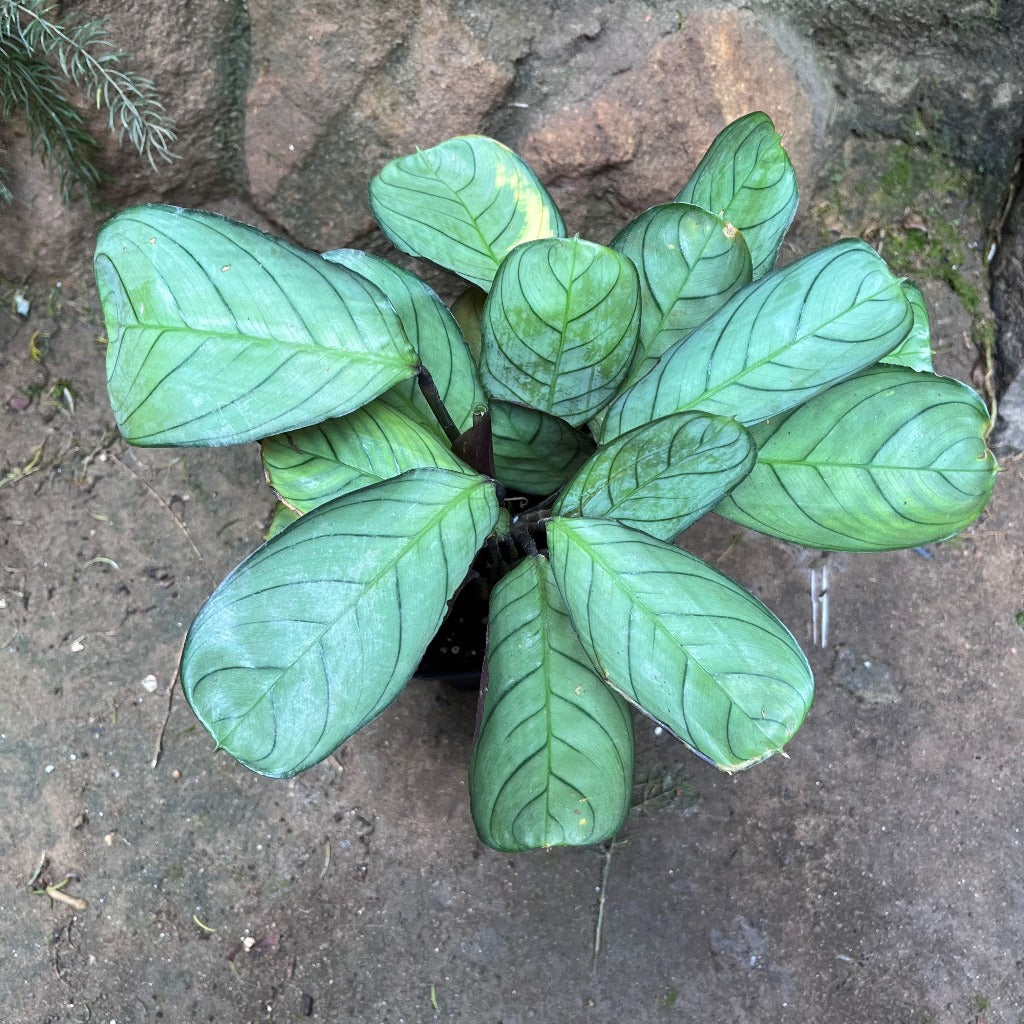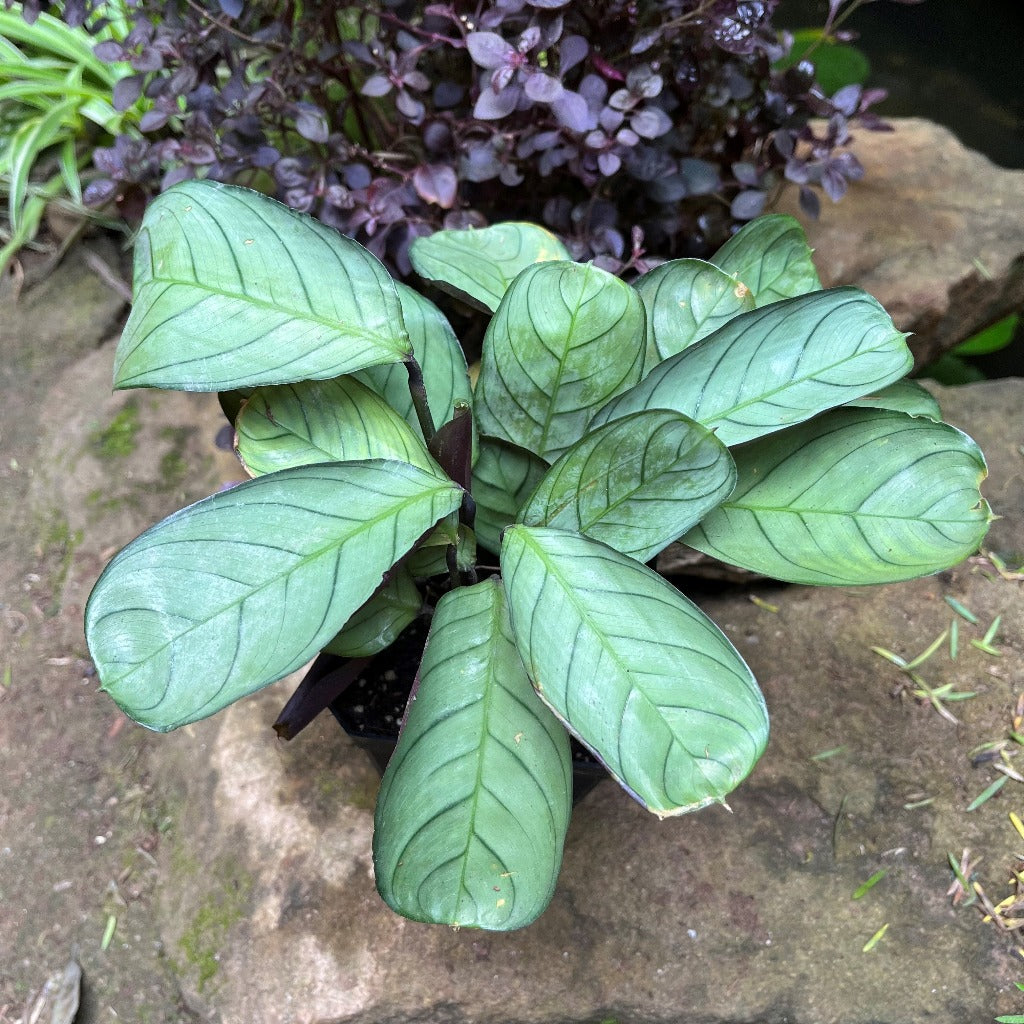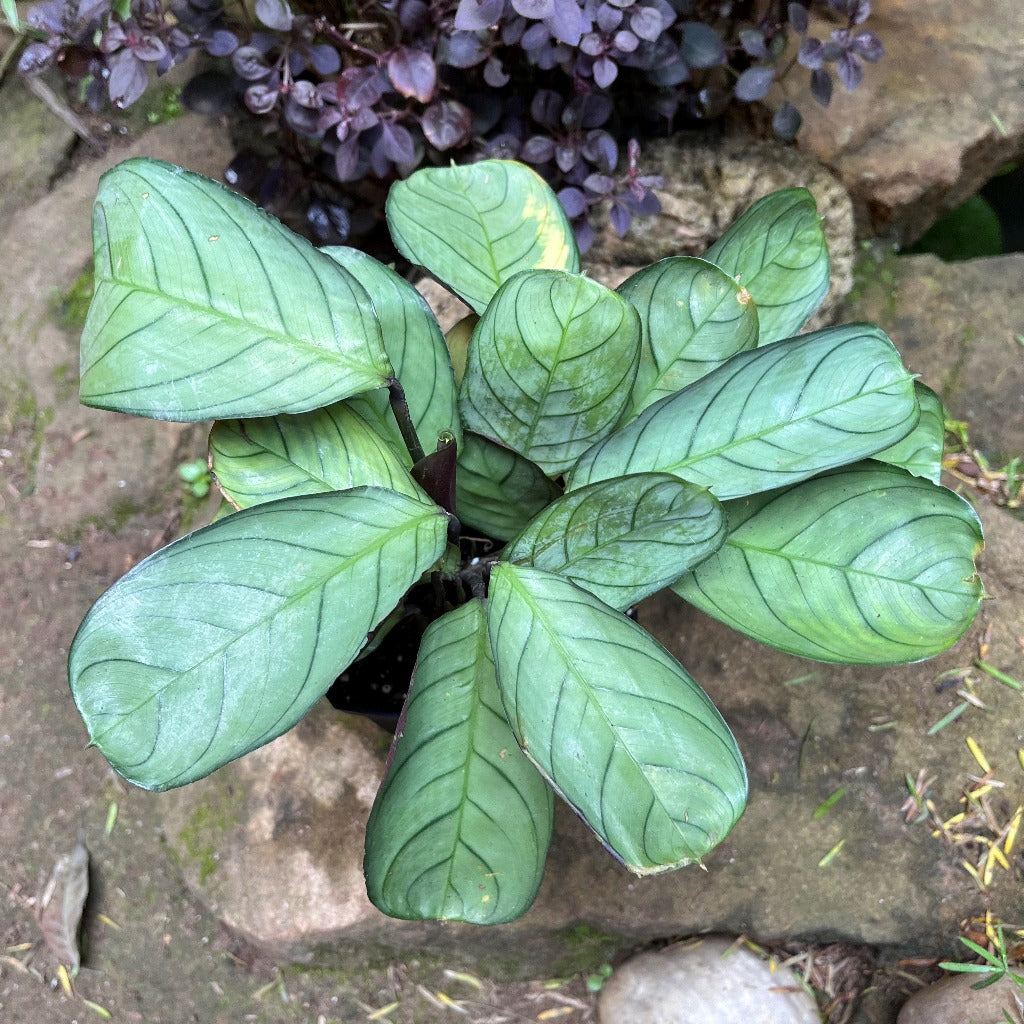Fishbone Prayer Plant
Family
Marantaceae
Origin
Brazil
Description
Ctenanthe are related to Maranta, Calathea and Stromanthe and are best known for their fantastic leaf patterns!
Ctenanthe Burle Marxii Amabilis has lovely long, pale grey-green, oval leaves with a gorgeous herringbone pattern. The leaves are wonderfully offset by a deep purple stem and leaf underside. Ctenanthe Amagris leaves close upwards at night like other prayer plants.
Environment
A beautiful tropical houseplant, Ctenanthe thrives in spots with high humidity. Ctenanthe is referred to as a shade plant, since in nature it grows in the densely vegetated tropical rainforests of South America. A North facing windowsill would be the first choice here, but any other situation will be acceptable providing you can provide shielding from the direct sunlight these places would receive at some point during the day.
Spraying the plant occasionally will be beneficial. Do not allow the pot soil to dry out completely - but take care: water standing in the pot means wet roots, which Calathea does not like. So give the plant regular but small amounts of water!
Giving fertiliser once every 14 days will ensure that you can enjoy your houseplant for a long time. Giving fertiliser once every 14 days will ensure that you can enjoy your houseplant for a long time:
The plant will continually develop new leaves. The leaves of a plant that is not happy will curl and shrivel, and will stop growing.
Landscape Use
Ctenanthe will do well in a container garden, terrarium or as a houseplant as it prefers low light and is easy to care for. They are very suitable for kitchens and bathrooms.

















